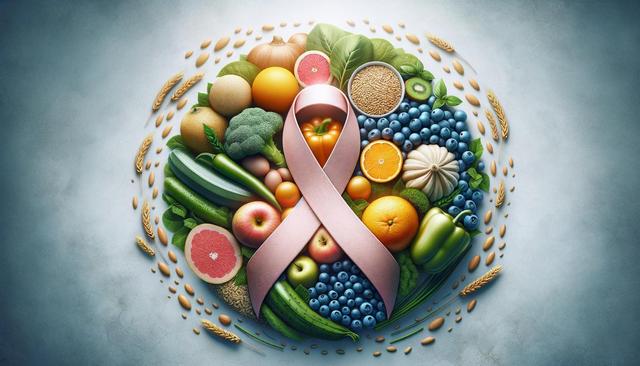The Link Between Diet and Breast Cancer Risk
Although no single food can guarantee the prevention of breast cancer, growing evidence suggests that diet plays a significant role in influencing risk factors. Nutritional choices can affect hormone levels, inflammation, and overall cell health—all of which are connected to cancer development. A diet rich in whole, nutrient-dense foods supports the body in maintaining a balanced internal environment, which may help reduce the likelihood of abnormal cell changes.
Research indicates that diets high in saturated fats and processed foods may correlate with a greater risk of breast cancer. Conversely, eating more plant-based foods and maintaining a healthy weight through mindful eating habits are associated with a lower risk. The emphasis should be on long-term eating patterns, rather than quick fixes or drastic restrictions.
Key dietary factors include fiber intake, antioxidant consumption, and limiting alcohol. These elements contribute to hormonal balance and oxidative stress reduction, which are both relevant to breast cancer development. While diet alone cannot eliminate all risk, it remains a valuable and actionable component of an overall preventive strategy.
Focus on Plant-Based Foods
Incorporating a variety of plant-based foods into your diet can be a proactive approach to supporting overall health and potentially lowering breast cancer risk. These foods are typically high in fiber, antioxidants, and phytonutrients, which help protect cells from damage and support immune function.
Some examples of beneficial plant-based foods include:
- Leafy greens like spinach, kale, and collard greens
- Cruciferous vegetables such as broccoli, cauliflower, and Brussels sprouts
- Whole grains including oats, brown rice, and quinoa
- Legumes like lentils, chickpeas, and black beans
- Colorful fruits such as berries, oranges, and apples
These foods provide nutrients that may modulate estrogen levels and reduce chronic inflammation, both of which are relevant factors in breast cancer prevention. A colorful, diverse diet not only supports physical health but also encourages sustainable eating habits for long-term wellness.
Healthy Fats and Their Role
Fats are an essential part of any diet, but the type of fat consumed matters significantly when considering breast cancer risk. Replacing saturated and trans fats with healthier options can support better hormonal regulation and reduce inflammation, both of which are linked to cancer progression.
Healthy fat sources to include in your diet are:
- Avocados
- Nuts and seeds, especially walnuts, flaxseeds, and chia seeds
- Olive oil and other cold-pressed vegetable oils
- Fatty fish like salmon and sardines (rich in omega-3 fatty acids)
These fats contain compounds that may contribute to cell membrane integrity and support anti-inflammatory responses in the body. Omega-3 fatty acids, in particular, have been studied for their potential protective effects against several chronic diseases, including certain cancers.
Moderation remains key, as all fats are calorie-dense. Balancing fat intake within the context of an overall nutrient-rich diet helps maintain a healthy weight, another important factor in reducing breast cancer risk.
Limiting Risk-Associated Foods
Just as certain foods support health, others may increase the risk of developing breast cancer. Limiting or avoiding these items can contribute to a more protective dietary pattern. Processed and red meats, for example, have been linked to increased cancer risks in various studies. Similarly, high sugar intake can contribute to obesity and insulin resistance, both of which are associated with cancer development.
Foods to consider limiting include:
- Processed meats such as sausages, bacon, and deli meats
- Sugary beverages and snacks with added sugars
- Refined carbohydrates like white bread and pastries
- Alcohol, which has a known association with increased breast cancer risk
- Foods high in saturated and trans fats
Reducing these items doesn’t mean eliminating all indulgences; it’s more about making mindful choices most of the time. Gradual changes, such as swapping sugary drinks for water or herbal teas, can make a meaningful difference over time. Reading food labels and being aware of hidden sugars or trans fats is also beneficial.
Maintaining a Healthy Weight Through Diet
Weight management plays a crucial role in breast cancer prevention, especially after menopause. Excess body fat can lead to higher levels of estrogen and insulin, which are linked to breast cancer development. A balanced diet, combined with regular physical activity, is essential for maintaining a healthy weight.
Strategies for healthy weight management include:
- Eating smaller portions and avoiding overeating
- Choosing nutrient-dense foods over empty calories
- Incorporating regular meals and planning snacks to avoid sudden hunger
- Staying hydrated and reducing sugary drink consumption
- Practicing mindful eating to better recognize hunger and fullness cues
Rather than focusing solely on calories, it’s helpful to consider the quality of the food being consumed. Prioritizing whole foods and avoiding highly processed items can support both weight control and overall wellness. Consistency and patience are key, as long-term habits tend to yield the most sustainable results.
Conclusion: Building a Sustainable, Health-Focused Lifestyle
While no diet can completely eliminate the risk of breast cancer, adopting a thoughtful, whole-food-based approach to eating can be an empowering strategy. By focusing on plant-based dishes, healthy fats, and limiting processed and high-risk foods, individuals can support their overall health and potentially lower their risk. Small, consistent dietary changes can lead to long-lasting benefits.
For those looking to take proactive steps, it’s helpful to view diet as one aspect of a broader lifestyle approach that includes regular physical activity, weight management, and routine health screenings. Working with a registered dietitian or healthcare provider can also offer personalized guidance tailored to individual needs and risk factors. Ultimately, the goal is to build an eating pattern that supports both immediate well-being and long-term health.


